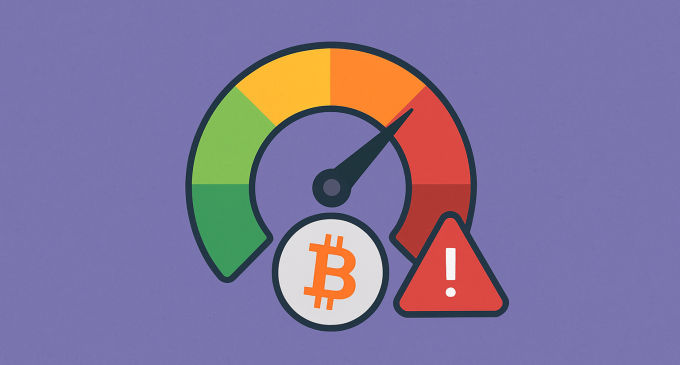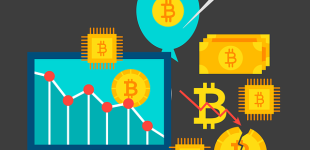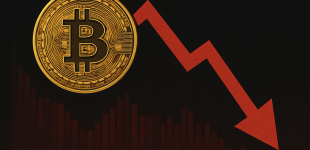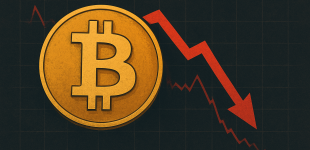
Introduction
The world of cryptocurrency is not just driven by technical indicators or blockchain technology. It is deeply influenced by human emotion. One of the most widely referenced tools for gauging this emotional component is the Bitcoin Fear and Greed Index. As of August 7, 2025, this index has plunged into the Extreme Fear zone, signaling heightened uncertainty among investors and potential shifts in the market’s momentum. This drop comes amid a backdrop of sharp price corrections, liquidity concerns, and a broader risk-off sentiment that is spilling across all digital asset classes.
What Is The Bitcoin Fear And Greed Index?
The Bitcoin Fear and Greed Index is a composite score ranging from 0 to 100 that is designed to capture investor sentiment in the cryptocurrency market. A lower score indicates fear, while a higher score represents greed. When the index drops into the extreme fear category, typically defined as a value between 0 and 24, it implies that investors are highly risk-averse, possibly selling assets out of panic or avoiding further market exposure.
This metric is compiled using various data points such as market volatility, momentum, social media activity, Bitcoin dominance, and Google Trends. Developed as an emotional pulse check for Bitcoin and, by extension, the broader crypto market, the index helps investors gauge whether the market is in a healthy correction or entering a panic-driven sell-off phase.
In the current market climate, the index has dropped to one of its lowest levels in several months. This sharp move suggests a powerful wave of pessimism is taking hold, with participants bracing for further downside or significant disruption.
What Drove The Sudden Surge In Fear?
There are several factors currently contributing to this atmosphere of fear in the cryptocurrency market. The most pressing one is the recent macroeconomic commentary coming from the United States Federal Reserve. Statements regarding future rate hikes and a potential delay in monetary easing have caused risk assets, including cryptocurrencies, to decline sharply. Bitcoin fell over 8 percent in the last seven days, while altcoins such as Ethereum and Solana saw even more significant drawdowns.
This negative performance has been coupled with a broader reduction in trading volumes. As liquidity dries up, price swings become more erratic, exacerbating investor anxiety. Liquidity is often seen as a cushion against volatility, and without it, even moderate sell-offs can trigger exaggerated price moves.
Retail Investors Become Increasingly Risk Averse
One of the most telling aspects of the Fear and Greed Index is its reflection of retail investor sentiment. As Bitcoin prices began to slide over the past two weeks, there was a noticeable uptick in online chatter regarding exit strategies, portfolio protection, and risk mitigation. Social media, a key input in the index, saw increased engagement on hashtags related to crypto crashes and bear markets.
Retail traders, often more emotionally reactive than institutional players, have begun pulling funds from centralized exchanges. On-chain data from blockchain analytics firms shows a sharp increase in self-custody transfers, suggesting that users are preparing for prolonged volatility or potential exchange outages.
Institutions Pause Amid Growing Uncertainty
Institutional investors, who have increasingly become a significant force in the crypto ecosystem, are also showing signs of hesitation. Reports from several digital asset funds indicate a slowdown in capital deployment. Derivatives markets are reflecting this as well, with futures and options open interest declining sharply over the past week.
Hedge funds and asset managers are facing pressure from clients to reduce risk, especially in speculative markets like cryptocurrency. This withdrawal of large-scale capital not only removes support from the market but can trigger a feedback loop where retail investors interpret institutional exits as confirmation of bearish trends.
Additionally, custodians and over-the-counter desks have reported that most current flows are skewed towards selling or de-risking, rather than accumulation. These trends underscore the notion that fear is not limited to emotional retail participants but is a broader phenomenon affecting all layers of market participation.
Looking Back: Historical Patterns Of Fear In Crypto
The current plunge in the Fear and Greed Index is not unprecedented. Similar levels were observed during the COVID-19 market crash in March 2020 and again in May 2022 when the Terra/Luna ecosystem collapsed. Each time the index hit extreme fear, the crypto markets eventually rebounded, though not always quickly.
These historical benchmarks suggest that while fear may signal opportunity for long-term investors, it can also precede further downside in the short term. In 2020, the index hovered in the extreme fear range for nearly two months before meaningful recovery began. The psychological impact of fear tends to linger, especially when reinforced by macro-level issues.
Wider Impact On The Crypto Ecosystem
When fear dominates market sentiment, its impact is felt across the crypto ecosystem. Development activity on public blockchain networks often slows, as projects struggle with funding or delay roadmaps amid bearish conditions. DeFi protocols witness reduced TVL (Total Value Locked), and NFT marketplaces suffer from lower transaction volumes.
Startups find it more difficult to raise capital, and venture capital firms adopt a wait-and-see approach. This shift has long-term implications for innovation and adoption within the space. Developers, creators, and businesses dependent on positive market sentiment often find themselves on the defensive during such downturns.
Experts Weigh In On Current Volatility
Industry analysts and market strategists have weighed in on the current state of extreme fear. Many see the index as a reliable contrarian indicator. According to several experts, when the index hits low levels, it can signal a buying opportunity for patient investors who are willing to ride out short-term turbulence.
Others caution that macroeconomic conditions are different this time around. With inflationary pressures, tighter monetary policy, and geopolitical tensions looming large, they argue that the typical V-shaped recovery may not materialize.
Still, the consensus is that fear is a natural part of the market cycle. In fact, it is often necessary to flush out excess speculation and reset investor expectations. From a technical analysis perspective, some traders believe that key support zones could be tested before any meaningful upward momentum is regained.
Possible Market Scenarios: What Lies Ahead?
In light of the current sentiment captured by the Fear and Greed Index, several scenarios could play out in the coming weeks and months. One possibility is a prolonged consolidation phase, where prices stabilize within a range as market participants digest recent events. During this period, volatility may remain high, but a base for future growth could form as confidence slowly rebuilds.
A more pessimistic scenario involves continued downside pressure, especially if global markets face further turbulence or if regulatory developments negatively impact key crypto infrastructures. In this case, Bitcoin and other major assets could test lower support zones, triggering additional panic selling and further drops in the sentiment index.
Investor Strategies In Times Of Extreme Fear
Navigating the crypto market during periods of extreme fear requires a disciplined and measured approach. For long-term investors, these moments often present opportunities to accumulate high-quality assets at discounted prices. However, caution is crucial. Dollar-cost averaging, maintaining adequate liquidity, and setting realistic expectations are key components of a sound strategy.
For active traders, volatility can be both a risk and a reward. Sharp price swings offer chances for profit but can also lead to significant losses if risk management is ignored. Many experienced traders adopt strategies like short-term scalping or hedging with options during high-fear environments to protect capital while staying engaged.
The Role Of Media And Social Narratives
The current decline in sentiment is not only influenced by economic data and price charts—it is also heavily shaped by media narratives and social dynamics. Headlines predicting doom, influencers sharing bearish outlooks, and a constant flow of negative sentiment on platforms like X and Reddit reinforce investor fear.
This amplification effect can distort rational decision-making. As more people react to fear-driven information, it creates a feedback loop that worsens overall sentiment, sometimes without a solid basis in fundamentals. It’s important for investors to critically assess the sources of information they rely on and seek balanced perspectives.
Education And Mental Preparedness In Volatile Markets
One of the best defenses against emotional decision-making is knowledge. Understanding the historical nature of crypto cycles, the behavior of sentiment indicators like the Fear and Greed Index, and the structural reasons behind market corrections can help investors stay grounded during turbulent times.
Mental preparedness is also key. Every investor must develop a personal framework for risk tolerance and investment horizons. Without it, panic decisions become almost inevitable when markets swing sharply. Journaling, goal-setting, and scenario planning are helpful tools that serious investors often use to maintain clarity and confidence.
Rebuilding Confidence After Panic
Once the index bottoms out and market fear starts to recede, a different challenge emerges—rebuilding investor confidence. Recoveries are often slow and marked by false starts. It takes time for sentiment to shift from fear back toward neutrality or optimism. During this transition, trust in platforms, exchanges, and assets must be re-earned.
Development teams often resume product rollouts after a pause, and early adopters begin accumulating again. This phase is critical for long-term market health. Without organic rebuilding, any rally risks being short-lived or purely speculative.
Final Thoughts
Fear in the crypto market is both a warning and an opportunity. It signals the presence of risk, but also the potential for reward. The Bitcoin Fear and Greed Index, while simple in design, captures the pulse of an emotional, fast-moving market in a way few other tools can.
As of early August 2025, the plunge into extreme fear reflects more than just price action—it encapsulates broader concerns about monetary policy, market structure, and investor behavior. Whether this moment marks the end of a correction or a deeper phase of the bear cycle remains to be seen.







There are no comments at the moment, do you want to add one?
Write a comment